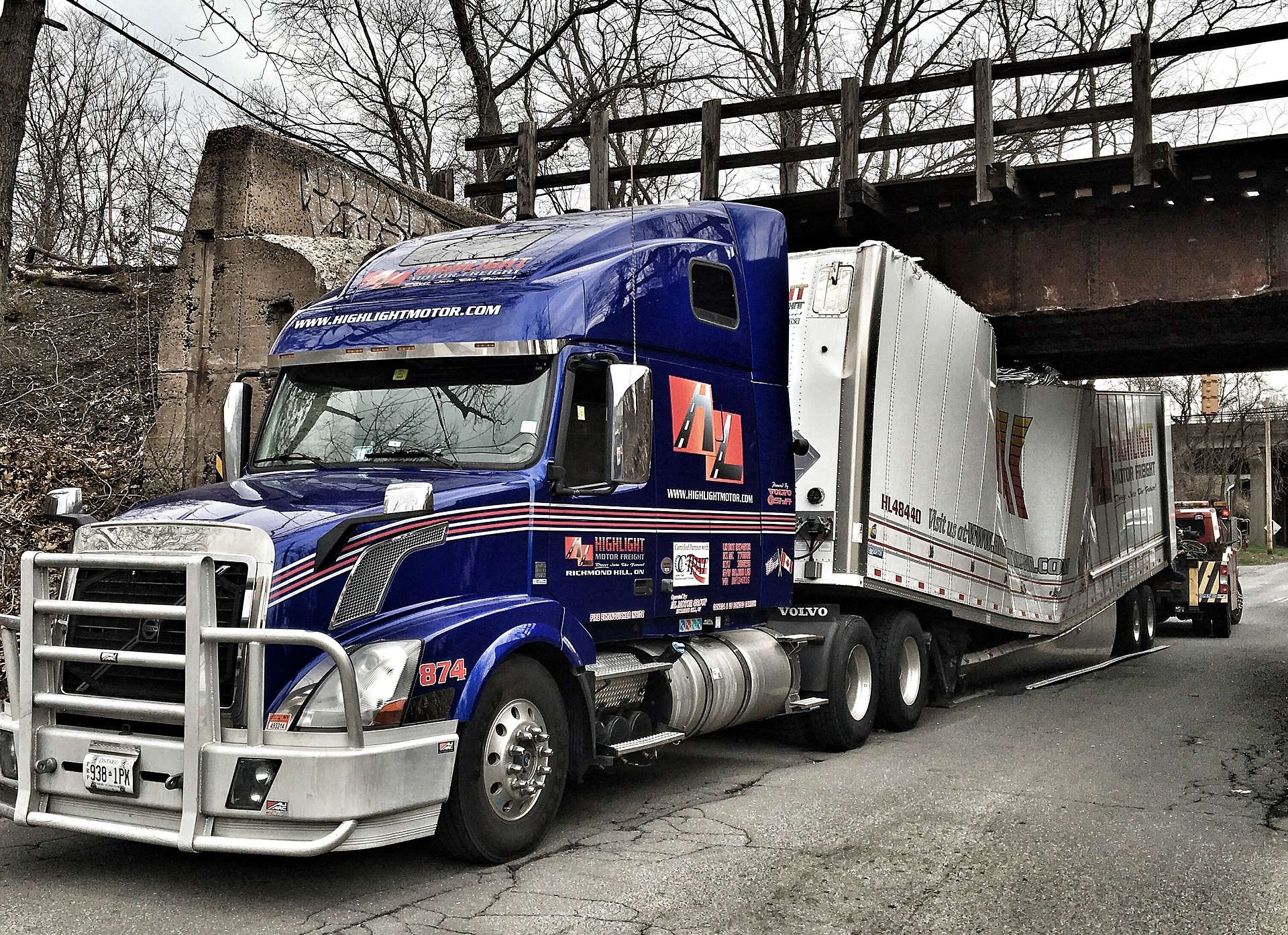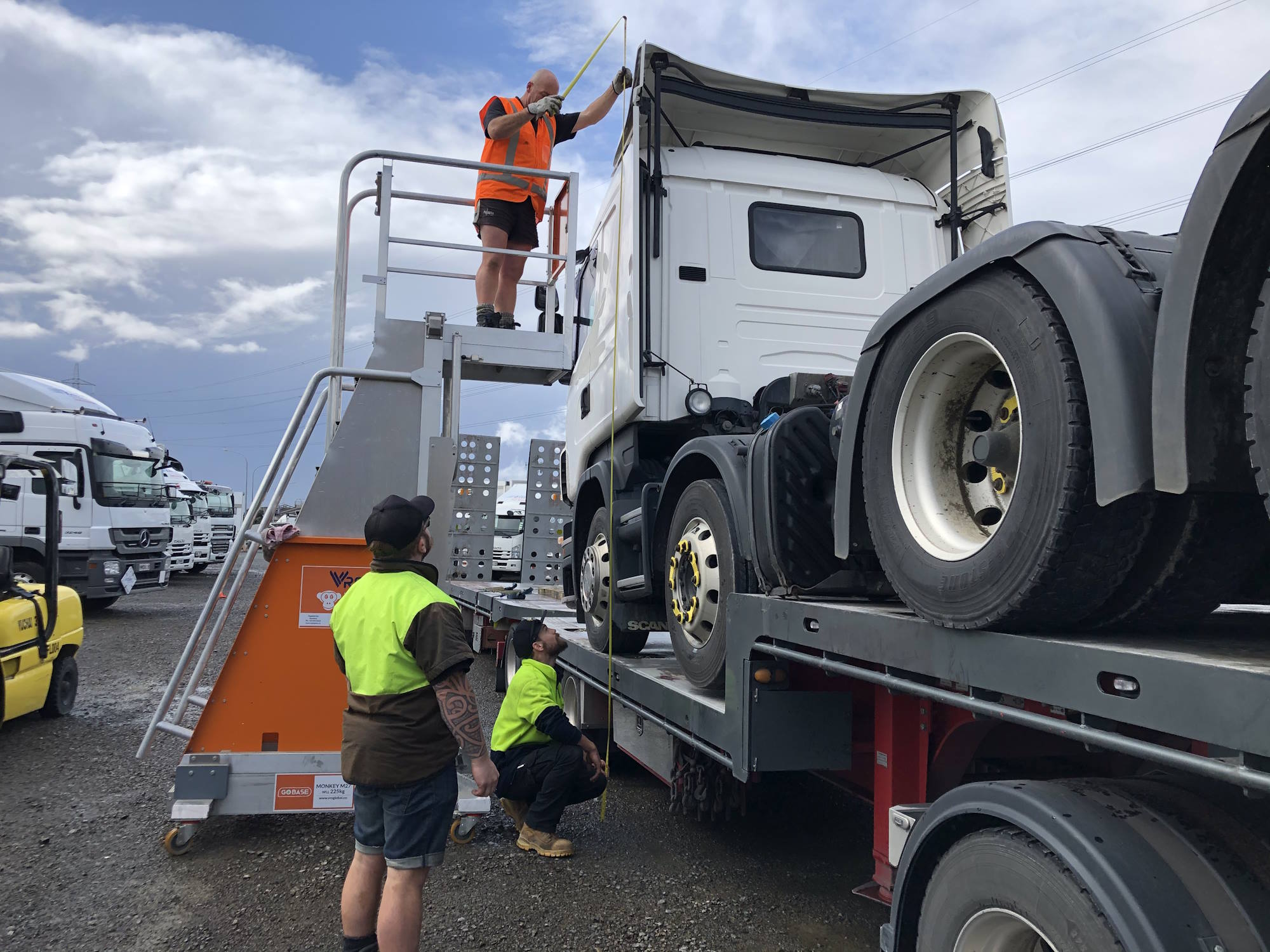Truck strikes on bridges are a recurring problem in New Zealand, causing significant disruption, costly damages, and posing safety risks to other road users. These incidents often result from misjudgments regarding the height of vehicles or loads, inadequate route planning, or failure to adhere to regulatory requirements. Addressing this issue is critical to maintaining the integrity of the country’s infrastructure and ensuring road safety.
Historical incidents
Several notable incidents have highlighted the severity of this issue. In 2018, a truck carrying an excavator struck the Penrose Bridge in Auckland, causing extensive damage and resulting in major traffic delays. Another significant incident occurred in 2015 when a truck hit the Ellerslie-Panmure Highway bridge, leading to prolonged road closures and costly repairs. One bridge on Rust Avenue in Whangarei has been hit over 15 times since 2004 as it is only 3.44m high. These events underscore the importance of stringent compliance with height regulations and meticulous route planning.

Issues facing truck drivers
Truck drivers face numerous challenges, including navigating through urban areas with low-clearance bridges, understanding and adhering to vehicle dimension rules, and ensuring their loads comply with height restrictions. The complexity of modern logistics, tight schedules, and the need to maximize payloads often exacerbate these challenges.
Rules for vehicle dimensions
In New Zealand, the maximum height for vehicles, including their loads, is 4.3 metres. However, certain routes may have lower height clearances, necessitating careful route planning. Vehicles exceeding the standard dimensions require special permits, which involve detailed assessments to ensure safe travel without causing infrastructural damage. Learn about vehicle dimensions and mass and permits here.
Tips to avoid bridge strikes

To mitigate the risk of bridge strikes, truck drivers should adopt several proactive measures:
- Planning: Thorough route planning is essential. Utilise GPS systems and route planning software that include height restrictions and low-clearance warnings.
- Observing signs: Pay close attention to road signs indicating bridge heights. These signs are strategically placed to provide ample warning of upcoming low-clearance areas. Some low-clearance bridges have sensors well ahead of the bridge which flash a warning sign for drivers to pull over or take an alternative route.
- Scanning ahead: Maintain a vigilant lookout for bridges and other potential obstacles. Regularly scan the road ahead to anticipate and react to hazards.
- Permit requirements: For loads exceeding the standard height, obtain the necessary permits. These permits are granted after ensuring that the load can be transported safely without risking bridge strikes or other structural damages.
- Avoid shortcuts: Avoid Google’s tempting shortcut to shave a few minutes off your time. Mapping software often doesn’t know where you can’t drive.
Measuring and remembering your truck’s height
Accurately measuring the height of the truck and its load is crucial. This can be done using a measuring tape or stick, or laser measurement tools, starting from the ground to the highest point of the load. It is advisable to measure the height with the truck fully loaded, as suspension changes can affect the overall height.

To ensure that the height is always top of mind, drivers can:
- Label the height: Clearly label the vehicle’s height on the dashboard or the sun visor. This constant reminder helps in making quick, informed decisions when approaching bridges.
- Regular checks: Regularly remeasure the vehicle, especially when the load changes, to account for any variations.
Reducing load height
If the load height exceeds the legal limit or route-specific restrictions, consider the following adjustments:
- Repositioning the load: Distribute the load to lower the overall height.
- Using lower profile equipment: Utilise lower profile trailers or equipment to decrease the height.
- Disassembling the load: If feasible, disassemble the load into smaller, more manageable sections that comply with height restrictions. For example, take attachments off excavators.
Truck strikes on bridges in New Zealand remain a significant concern, but with careful planning, adherence to regulations, and proactive measures, these incidents can be minimized. Truck drivers must remain vigilant, continuously educate themselves on current rules and best practices, and utilize modern tools and technologies to aid in safe navigation. By doing so, they not only protect infrastructure and avoid costly penalties but also contribute to a safer road environment for all users.

